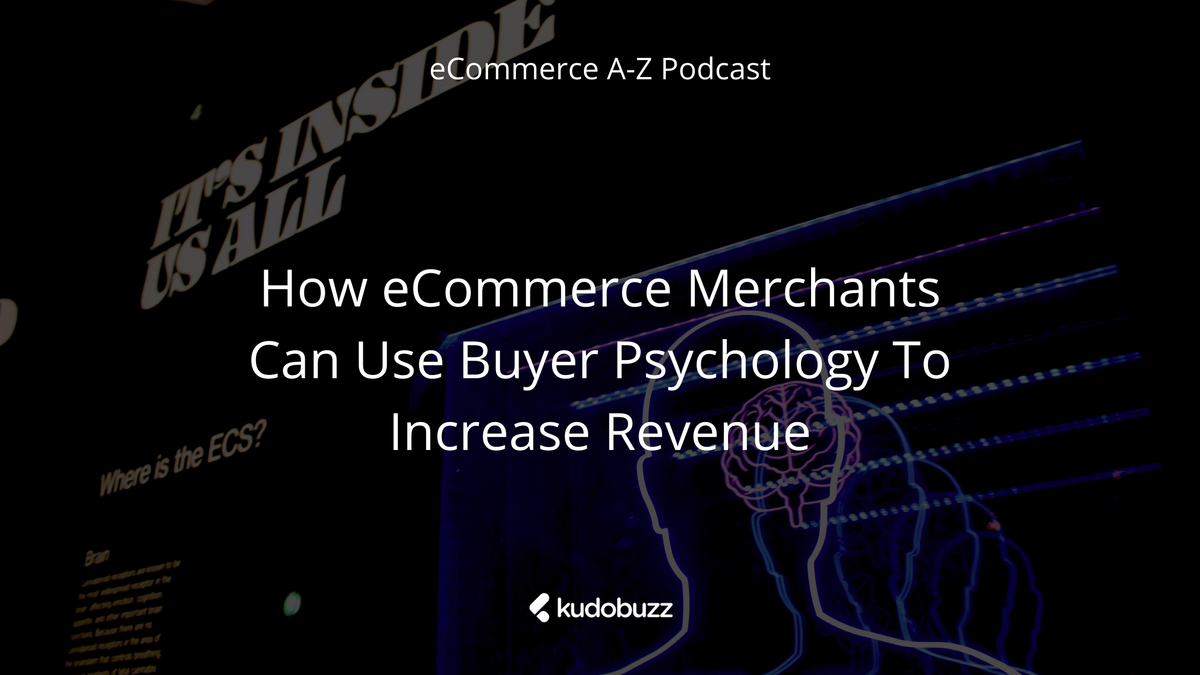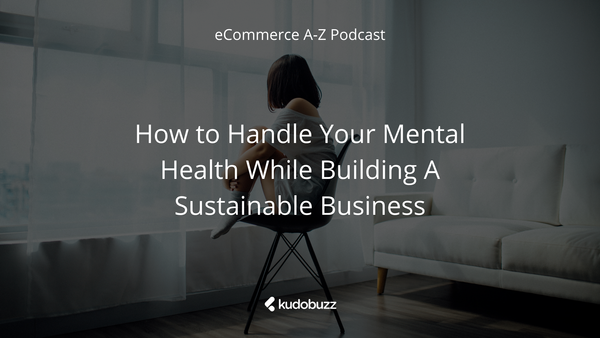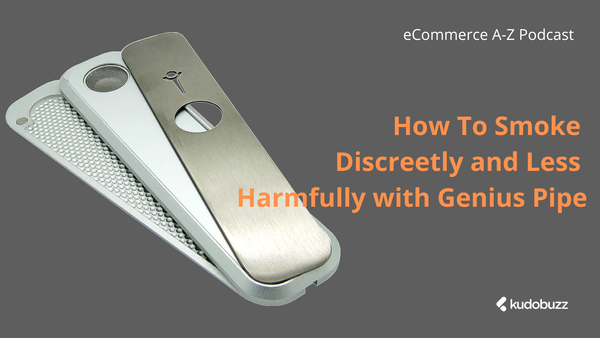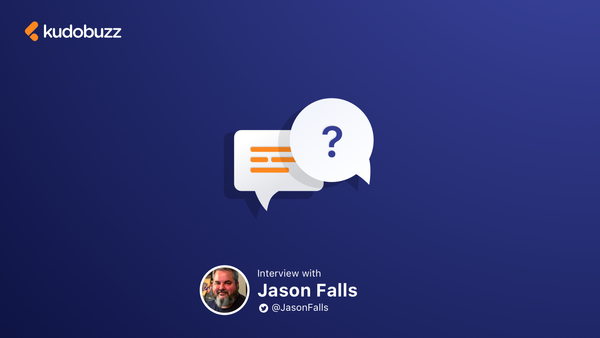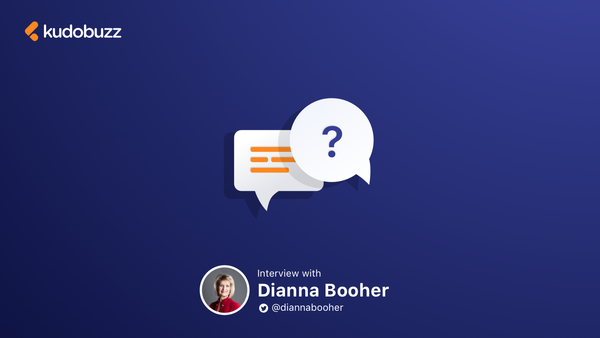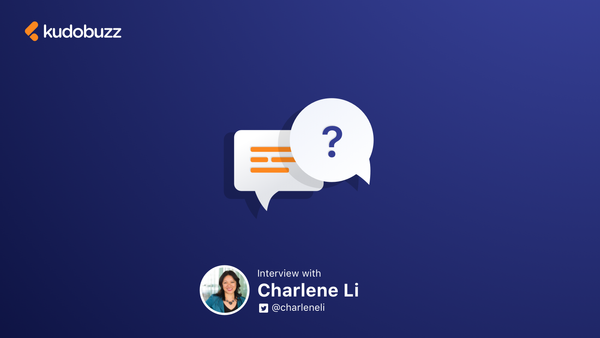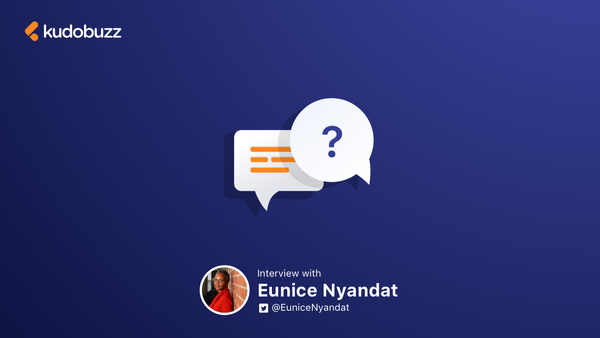In this episode, we speak with Rishi Rawat of Frictionless Commerce. Frictionless Commerce helps direct-to-consumer brands increase sales by telling a story that addresses concerns and inspires on-the-fence shoppers to buy.
Our conversation focuses on how eCommerce merchants can have a deep understanding of buyer psychology and get into the minds of buyers.
Hi there, Welcome to episode 11 of the eCommerce A-Z podcast brought to you by Kudobuzz Reviews. I am your host, Dzifa Mensah.
In this episode, I speak with Rishi Rawat of Frictionless Commerce. Frictionless Commerce helps direct-to-consumer brands increase sales by telling a story that addresses concerns and inspires on-the-fence shoppers to buy.
Our conversation focuses on how eCommerce merchants can have a deep understanding of buyer psychology and get into the minds of buyers.
This episode is brought to you by Kudobuzz Reviews, the best way to collect and display reviews on your website. Stay tuned.
CONVERSATION
Dzifa Mensah
Hi Rishi, welcome to the eCommerce A to Z podcast.
Rishi Rawat
Hi Mary, nice to meet you.
Dzifa Mensah
Can you please tell me a little about yourself?
Rishi Rawat
Well I have been thinking about and working on buyer’s psychology for the last 12 years now and even longer. I have had my business for the last 11 years. What I do for clients is, I understand why shoppers on their website behave the way they do and we try to figure out how we can help those shoppers achieve the goals that they are trying to solve as quickly as possible.
Dzifa Mensah
First off, how do we get into the heads of our buyers?
Rishi Rawat
I think it's one of those things where it is part art and part science. What I mean by that is the art part of it comes from my personal experiences. So the reason why I am able to effectively get into the heads of the buyers is because I am a buyer and I am a very particular type of buyer. I am the type of buyer who gets very easily confused, I have a very hard time reading instructions, following instruction manuals, following navigation paths, things that are very obvious to a client or you maybe. For example, the location of where information might be available on a webpage, I get easily confused. This is kind of in a way a secret power because it has allowed me to be deeply and massively empathetic and relate to struggling shoppers. So that’s the art part of it.
The science part of it is that on the flip side, we also have 11 years of A and B testing experience where we have lots and lots of data based on the test we are running right now and we have run over the past 11 years on things that work and don’t work. That’s a two-part answer.
Dzifa Mensah
So, for a new eCommerce business, say less than a year old, this last part(science) is what you are trying to say or it will take a long time before they have enough data for them to understand their buyers, with regards to using science, is that it?
Rishi Rawat
That’s a great point. I think there is something to be said about how much data you need. And you need a fair amount of data. But I also think that there are a lot of qualitative things that you can do. So that data part is quantitative but on the qualitative side even if you’ve had one sale or you’ve had five sales, you can start interviewing and talking to those people that bought to understand ‘why did you buy at this point in time, like why did you buy now or not 3 months ago or not 3 months later?’ or ‘what other alternatives and products were you looking at?’, or ‘if you haven’t bought, what would you have done if you had not made the budget?’. I think those qualitative questions would give you incredible insights into buyers psychology.
Dzifa Mensah
What are the 9 different buyer psychology stages to convert first-time buyers?
Rishi Rawat
I will give some background as well for your audience. We have been retesting for the past 11 years and we have tested pretty much every kind of concept you can think about. From design to layout to navigation to call to actions and we have also tested copy. And what we have discovered in that process is that what we have found that in the testing that we do, copy changes really make a big difference when it comes to converting shoppers. So through trial and error we have identified 9 specific copywriting hoax or 9 specific copywriting angles that are based on buyer psychology that convince buyers. These are;
1: People are skeptical. And when I say people, I mean buyers are skeptical of ‘too good to be true’. So be mindful of this. When you make a claim, even if it is a claim that is true. If for example you are selling an air purifier and you are claiming it is 100% more effective than the next best air purifier. That seems like too good to be true. So even though it might be true, you want to be mindful about it. You make sure that you are explaining this appropriately.
2: The second one is that buyers find expertise sexy. We all want to buy from experts. Your listeners want to listen to conversion optimization from someone who has been doing conversion optimization for a long time. Make sure you are communicating expertise in your copy
3: The third one is buyers' roots for people who beat the odds. There is something about us in our human spirit where we are really fascinated and intrigued by people who have overcome difficulties. This is why the David and Goliath story has resonated over hundreds of years. The reason is when someone is making an air purifier, we want to understand the difficulties they went through because that makes us appreciate the product even more. That's the third one.
4: The fourth one is we are fascinated by surprising details. I call surprising details, energy boost. When you are going through a sales page or when you are discovering a product and you discover something very interesting and unique that the product does that you had not even considered before. We are really drawn to that.
So that’s the top four.
The next one is we are visual animals. So anything that you can explain, if you can explain through a visual narrative, it will be a lot more effective. We love personalized experiences so anytime you can give people the feeling that what they are about to experience or what they are experiencing has been personalized for them, that is really going to have an effect on conversion rates and conversion intent.
The next one is, we all like that we have stumbled onto something rare. We all like discovering something that we feel like we are one of the first people to have discovered. So that’s the reason why certain types of music become very popular when they are just launched because there are people that are looking for that new music. The fact that it is something new and that it is something that they have just discovered is appealing to all of us as human beings so that is something we should also kind of play on from a copywriting buyer's psychology perspective if that opportunity presents itself.
The final one is that ultimately, we need to resolve all negative parts. Which means I will never make a purchase unless all of my questions have been answered. So even if I have two unanswered questions and a hundred questions that have been answered, I will not make a purchase until those two questions have been answered. Of course we can not anticipate every question but let's be mindful about mapping the most common questions people have and make sure that we are answering those successfully.
The point that I missed was point number six which is, we need motivation to break habits. This is a really important point because at the end of the day the buyer always has the choice of either pretending like this is not a problem. So going back to the air purifier example, the user can always say “I have survived so long without an air purifier, I am actually not going to buy an air purifier”. That’s one solution, which is basically not buying anything. But the other solution or the other option that is available to the buyer is to use a work around. Again, going back to the air purifier maybe when someone is buying an air purifier because they are concerned about pollution or they are concerned about allergens(allergens have huge molecules floating in the air) they might want to solve it by closing all the windows and not opening the windows at all or buying a mask or things like that. So there are other alternatives. As a marketer you must become aware of those alternatives because we need to make a convincing pitch to the buyer that those alternatives are not good enough. The good news is that the user is already on our website which means the user is already telling us that “I don’t think that those alternatives are as good enough as your product”. Now we just have to make a convincing argument.
Dzifa Mensah
What creates friction during the buying process and how can entrepreneurs and eCommerce merchants move that friction and make it easy for more customers to purchase?
Rishi Rawat
This is something also that you know that one needs to pay a lot of attention to. And it does vary a lot based on the type of shopper, and the website. Broadly speaking, friction to me is anything that slows the user down when the goal was not to slow the user down or prevent the user from completing a task that they were here on the website for. So they look at the website and the great news is that all that data is collected into analytics data to see patterns. In analytics data you break behavior down to the user level. They have this new feature when you say I want to see what a specific user did on my website and I say anything that they are doing that is slowing them down or is not their typical behavior is a form of friction so we need to remove all of this. There are two common mistakes that I see websites make.
- We have multiple tabs for people to navigate. So we have a top navigation then we repeat that same link at the top of the page and then we will repeat that same link at the lower part of the page. This can be a problem because sometimes people can use the lower link and they can get to a page and then from there they might lose context or they might have a different context because people that get to the page by reading everything that that was on the home page have different awareness from someone who got to that page from the top of the home page because now you have links at both locations.
- The other thing you need to be aware of is another thing that causes friction is having too many calls to actions. So you must have seen a situation where you go to a page and you are drawing attention to the fact that we have a discount, free shipping, we are drawing attention to the fact that we have a timer running so if you don’t buy now the discount will go away. There is so much competing for our attention so really ask yourself if they are critical and the answer most of the time is they are not so remove them.
Dzifa Mensah
How do you convert visitors with a lower attention span into buyers?
Rishi Rawat
So all visitors really have low attention spans and so we really need to work hard at maximizing conversion rates in this low attention span environment. So there are two ways to go about it;
- This is to actually minimize time wastage. There was this very interesting study that was done where they looked at hundreds and thousands of retailers and discovered that the average time a website for eCommerce websites was 2 minutes and 32 seconds I believe. That is very little time if you really think about it. For your customers and people listening to this podcast, that is not enough time for the buyer to make an informed decision. The way we deal with that is number one, we want to remove any wastage on the website. So if there is any kind of call to action or any page that has been created that is not very critical or is of no value, you can also configure and also calculate using analytics. You can look at the page value and if it is something that has no page value, then that means it has low revenue implied. So those kinds of content need to be thought about because we have only limited time to convert them. We need to minimize time wastage.
The way you do that is by creating a focused purchase pad. Don’t allow people to navigate the website in ten different ways because that means that they will navigate the website in 10 different ways and it is very hard for us to know as marketers if people are dropping off and why they are dropping off.
The second strategy is to keep the experienced focused on the primary goal. If you are selling handbags but you also have shoes and you also have dresses and someone comes to the website looking for a handbag, please don’t try and cross sell them a shoe or dresses, let them buy the handbag, that’s the thing.
The third point is to minimize ambiguity. Don’t describe things in a way that is hard to understand and what I mean by hard to understand is that don’t describe things in a way that leads to more questions. So remove all this ambiguity.
The next point is to craft content to write at a middle school reading level. So of course your users might be well educated and that’s fine, but you must write in a way that is at middle school level. The reason for that is not only because it helps with comprehension, but also helps with quick comprehension. We already mentioned that people have limited time on a website and they have low attention spans so writing content in a way that is easy to read really makes a difference.
The next point is to organize content so that related items are grouped together. Very often we will find things where one piece of the story or the puzzle is not on this page, another piece of the puzzle is solved way lower on the page and I don’t think that that is a smart idea. Group logical things together.
The next strategy is to minimize the need for shoppers to hunt around, hunt down stuff or to leave the page and this related to the previous point. Which is that don’t make the user leave the page or run a search to kind of get the answer.
The final strategy is to always think about the content in two dimensions. There is short content and there is long content. We know that some shoppers are skimmers and some shoppers are methodical shoppers and you can not cherry pick and say I am only going to create experience for skimmers and not methodical shoppers because then you are losing potentially a huge percentage of your sales. Why not cater the both of them. As you are writing content, ask yourself will a methodical shopper like this and if the answer is no then instead of showing that extra content, right on the page by default which make the experience bad for skimmers, maybe you can add a link or something that is more detailed, when you click on it then we show more details.
Things like that actually help minimize time because the user is not having to go through content that they will not have to go through.
- The other way to deal with shoppers that have low attention spans is to actually buy more time. When I say buy more time, there are two ways to do this;
- Number one is that you must write a story. At the end of the day is all about marketing about stories and the way we kind of tell the narrative. So write a very compelling story. If it is interesting, people watch 3 minute YouTube videos and they can't watch a 30 minute YouTube video. The same people are happy to go to a movie theatre and watch a movie for an hour and half. In India, we watch Bollywood movies and those movies run for 3 and a half hours. So my point is that how is it possible that the same user that was not willing to watch anything more that 5 minutes on YouTube is watching an hour and half. And the reason for that is the way the story is crafted. In YouTube the stories that are crafted in a short form so when you are writing stories or telling a story about a product, craft it in a way that is very engaging because then you will actually get people to spend more time. Those 9 strategies of copywriting that I mentioned 10 minutes ago, those really play a role in making the copy more engaging.
- And then the second strategy for buying more time is that if someone is not ready to buy today, which by the way is going to be nearly 66% of your audience. So 66% of people that are on your website are actually doing research mode which means they are not likely buying today. Instead of trying to convince them and convert them today, why not ask for permission so we can keep in touch with them through email and if you use email then you automatically own the ability to stretch time because now you can send them a lot more emails and you can get more time with them.
Message from Sponsor
The eCommerce A-Z podcast is brought to you by Kudobuzz Review. Over 70% of online shoppers refer to reviews before making a purchase, according to them reviews serve as social proof and aids them in making purchase decisions. Collect reviews and display them on your website to convert your visitors to buyers. Join over 25,000 online merchants in the Kudobuzz family and start boosting your sales now. The Kudobuzz review app is available on Shopify, Bigcommerce, Wix, Weebly and Wordpress. Check out kudobuzz.com for more.
Dzifa Mensah
How and when do we use emotional cues and rational cues when trying to convert a buyer? First of all what are emotional cues and what are rational cues and which role does each of them play and where?
Rishi Rawat
An emotional cue is something that pulls at someone’s heartstrings, it pulls at someone’s emotional leads. To give you a great example I am going to use a motorbike example, but you can use a bicycle example as well. So if you are a teenager and you buy a BMX bike or one of those bikes or skates or a skateboard, the rational reason is “I want to buy a skateboard, I am physically buying a skateboard”. But the emotional need that I have to buy a skateboard is to do tricks and show off to my friends and have everyone say, “wow you are so talented”. So that is an emotional cue. If I were to sell a skateboard, I would actually play up on the emotional cue and say “hey this skate board is going to prevent you from falling down when doing a trick and making you look like a fool in front of your friends. So that is playing on the emotional cue.
So the rational side, the rational cue is basically features and benefits, features of the product. The kind of wheel that you have, how difficult it is to assemble it, the strength of the plywood that is used for the skateboard, things like that would be rational.
The reason why I think marketers need to focus more on the emotional cues is because most marketers have already kind of optimized the rational cues. If you look at your competitors, most of them have also used rational cues so it is almost like it is low returns to focus on ration cues and it is because almost like table stakes, something that people have already solved for. All of your clients and even people listening to this have already solved the rational reasons why we should buy them. I think the unknown and unexplored aspect of the emotional cues, I would say focus more on the emotional cues because ultimately 95% of your purchases are made for emotional reasons. This is an important point is that if you were to interview customers and say why did you buy, they would never say I bought for emotional reasons. What we do is we use rationality to justify an emotional choice.
Dzifa Mensah
Why do you think we use rationality to justify an emotional choice because we are scared of accepting emotional leads or what?
Rishi Rawat
Exactly right, we are embarrassed to. If you are buying a house and you kind of look into the house and you look through the rooms and you are like “oh my gosh, this room would be an amazing office, I can convert it into an office, I love the layout of this room”. You would feel very embarrassed telling yourself I bought the house because the office would look good you know because it does not seem rational. You would say I bought the house because it is a good neighborhood, I bought the house because whatever reasons are there. So yes, you are exactly right.
Dzifa Mensah
Let's talk about storytelling and the role it plays in buyers psychology. You mentioned when we were talking about how to convert shoppers with a lower attention span, you mentioned the need of crafting content to the middle school reading level and all of that and minimizing ambiguity and organizing the content to make related items to be grouped together. What role does storytelling play?
Rishi Rawat
I am kind of biased here because I know that sometimes people don’t believe that storytelling plays a role but to me I think all marketing is storytelling. So because I am a marketer I feel like everything is storytelling and therefore I think it plays a very critical role in influencing buyer psychology. So I look at it in terms of like a three step process;
- Crafting a story, creating a story that is beautiful then using that story you influence the buyers psychology using those 9 points we mentioned and then the third stop is increase sales so I think that they are all very strongly related so I have a biased answer here. I think we are all biased but my bias is that storytelling plays a big role and storytelling is very important.
Dzifa Mensah
What one thing would you want entrepreneurs especially eCommerce merchants to know about buyers psychology?
Rishi Rawat
That’s a good question. I want them to know that stories really matter and one of the things that we have seen over the years and this is something that especially entrepreneurs that are starting off struggle with as their business grows. So what happens is that when you just start a business, and you are just one person, you are actually relying a lot on your story and you are telling your story to everyone that you need. But what happens is that as you become successful, and as your business grows, now you have a team of marketers and you have got a team of people that are working for you, we tend actually to start deemphasizing the power of stories. So my advice is to not only, I have two pieces of advice, they are both related;
- Pull out your story, polish it and keep on working on it. Practice your story every single day so that’s number one.
- Don’t lose your story as you grow your business because at the end of the day, your stories really matter. So, keep on working on your story.
That’s my biggest advice to anyone who is listening. Focus on stories and keep your stories alive even as you grow your business.
Dzifa Mensah
Thank you so much Rishi for coming on the podcast and sharing your knowledge on buyers psychology.
Rishi Rawat
I am very happy to be here Mary. Thank you for inviting me.
CONCLUSION
Thank you for listening to our conversation with Rishi Rawat of Frictionless Commerce. I hope you implement the tips he shared on buyers psychology so that you can get into the minds of your buyers
My name is Dzifa Mensah. Until next time, stay safe.

